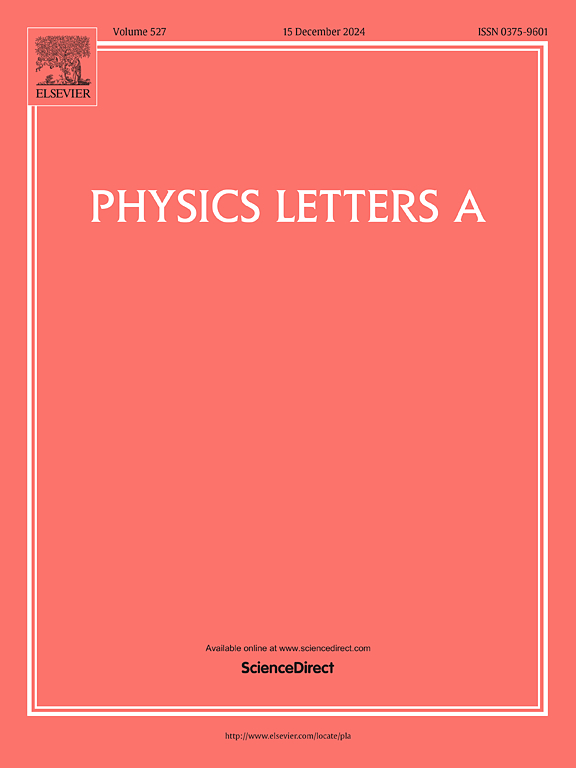Role of astrocyte on neuronal synchrony in chaotic environment
IF 2.6
3区 物理与天体物理
Q2 PHYSICS, MULTIDISCIPLINARY
引用次数: 0
Abstract
In this work, we investigate the role of astrocytes in regulating synchronization between neurons through modulation of their firing rates in a chaotic environment. To do this, we consider a tripartite system, consisting of a presynaptic neuron, a postsynaptic neuron, and an astrocyte, to be used to analyze the influence of astrocytic dynamics on neuronal behavior. The effects of astrocyte-mediated depolarizing and hyperpolarizing influences on the neuronal membrane potential are explored, focusing on how these processes alter spike activity under constant chaotic conditions. The study reveals that astrocytes can modulate the timing of random spike patterns in both neurons, with the excitatory and inhibitory effects of astrocytes leading to significant changes in neuronal firing rates. The results indicate that varying the astrocytic influence (parameterized by ϵ) can enhance or suppress neuronal firing rates, providing deeper insight into the mechanisms underlying the interactions between astrocytes and neurons in chaotic environments. The effect of channel noise of astrocytes on synchronization is considered and it is noted that astrocytic noise disrupts synchronization between neurons.
混沌环境下星形胶质细胞在神经元同步中的作用
在这项工作中,我们研究了星形胶质细胞在混沌环境中通过调节其放电速率来调节神经元之间同步的作用。为此,我们考虑了一个三方系统,由突触前神经元、突触后神经元和星形胶质细胞组成,用于分析星形胶质细胞动力学对神经元行为的影响。探索星形胶质细胞介导的去极化和超极化对神经元膜电位的影响,重点关注这些过程如何在恒定的混沌条件下改变spike活动。研究表明,星形胶质细胞可以调节两种神经元随机尖峰模式的时间,星形胶质细胞的兴奋和抑制作用导致神经元放电率的显著变化。结果表明,改变星形胶质细胞的影响(由御柱参数化)可以增强或抑制神经元放电率,从而更深入地了解混沌环境中星形胶质细胞和神经元之间相互作用的机制。考虑了星形胶质细胞Ca2+通道噪声对同步的影响,并指出星形胶质细胞噪声破坏神经元之间的同步。
本文章由计算机程序翻译,如有差异,请以英文原文为准。
求助全文
约1分钟内获得全文
求助全文
来源期刊

Physics Letters A
物理-物理:综合
CiteScore
5.10
自引率
3.80%
发文量
493
审稿时长
30 days
期刊介绍:
Physics Letters A offers an exciting publication outlet for novel and frontier physics. It encourages the submission of new research on: condensed matter physics, theoretical physics, nonlinear science, statistical physics, mathematical and computational physics, general and cross-disciplinary physics (including foundations), atomic, molecular and cluster physics, plasma and fluid physics, optical physics, biological physics and nanoscience. No articles on High Energy and Nuclear Physics are published in Physics Letters A. The journal''s high standard and wide dissemination ensures a broad readership amongst the physics community. Rapid publication times and flexible length restrictions give Physics Letters A the edge over other journals in the field.
 求助内容:
求助内容: 应助结果提醒方式:
应助结果提醒方式:


